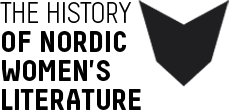Henrik Ibsen did not always go unchallenged. On the contrary, several of the women of the Modern Breakthrough felt provoked to correct or revise Ibsen’s original text, and time after time his portraits of women turn up in their plays and short stories, but rewritten on the basis of a different horizon of understanding. Two obvious examples from 1882 of such a female, partly subversive dialogue with Ibsen are Anne Charlotte Edgren Leffler’s short story “Tvifvel” (Doubt), and Alfhild Agrell’s play Räddad (Saved).These texts clearly show how Ibsen’s portrayal of women served as a challenge, a set piece that had to be tested and partly destroyed in order for the two female authors to arrive at a more credible story.
Tag: Marriage
In texts by female authors, work can often be combined with love and marriage, no matter whether the woman chooses regular paid employment or whether she, as is more frequently the case, becomes her husband’s partner or colleague. If, on the other hand, the woman chooses an artistic profession, the difficulties immediately begin to mount.“Female authors and artists are whores”, August Strindberg wrote in a letter to Ola Hansson. When the woman leaves her sheltered position in the home and steps out into the public sphere to sell her product, and thereby also herself, to an anonymous and paying audience, she is looked upon as being everybody’s woman, a prostitute.The conflict between love and art, between duty and calling, and between everyday life and life as an artist is a theme that recurs, with variations, in the works of the female authors of the 1880s, and one that is often presented on the backdrop of the stage and with an actress or a female singer as the main character.
The Modern Breakthrough in Sweden
Carl Jonas Love Almqvist’s novel Det går an. En tavla ur livet (It Can Be Done! A Picture out of Life; Eng. tr. Sara Videbeck) is a sharp and sweeping rejection of the Romantic image of the woman and a simple and elegantly presented utopia of love. It gave rise to the most heated and profound gender-political dispute on the literary scene in nineteenth-century Sweden, until the ‘morality controversy’ a few decades later. Some of the writers defended Almqvist, but most of them criticised him strongly.Without exception, the female authors who participated in the debate regarded Det går an as a male fantasy. The fact that Almqvist attached such great importance to the separation of sexuality from the institution of marriage made it almost impossible for the women to embrace his book wholeheartedly, although they shared his feminist views on other issues.
Swedish Emilie Flygare-Carlén’s first novel, Waldemar Klein (1838), to a great extent plagiarises the well-known style of Knorring’s novels. But later on she developed a profile all her own. The discussion of sexuality, men, and women that von Knorring had introduced was to be further developed, in a modern direction, by Flygare-Carlén. She did not shy away from calling the man’s egotism vis-à-vis the other sex by its rightful name, or from exposing the woman’s strategic duplicity with regard to engagement and marriage.Whereas Knorring describes sexuality as passionate and pent-up at one and the same time, Flygare-Carlén more explicitly sees it as a necessary but fatal drive. As her writing career progresses, she also shows how a determined woman may not always be able to change her situation but is at least able to influence it. It is undoubtedly her courage in giving a positive depiction also of vigorous women that is the secret of her great financial success as a bestselling author. In 1862 Emilie Flygare-Carlén was awarded the Swedish Academy’s large gold medal, and in 1865 her last important work appeared, the autobiographical trilogy Skuggspel (Shadow Play).
Christiane Birgitte Koren is best known for her diaries, written between 1808 and 1815 but not published until 1915, as: “Moer Korens” Dagbøger (Mother Koren’s Diaries). For the most part, the writer addresses herself to her closest family, but there are also texts addressed to friends and acquaintances in Denmark and Norway.Her diaries are an outlet for the expression of emotion and intellect. The mother’s role in the family involved being an agent of humanity and culture in the home, and within this parameter Koren could apply herself to theatre criticism, literary reviewing, the telling of folktales and anecdotes, and, not least, to passing on knowledge of human nature and her experience of life.Christiane Koren published three plays, Dramatiske Forsøg (Dramatic Attempts), in 1803. Her plays were not performed in her lifetime, nor has posterity shown them any interest.
There are many indications that women were largely responsible for the oral tradition in Norse literature, not least the eddic narrative poems which by and large thematise women’s experience and have a female perspective. The poetry was linked to the art of divination known as seid and to the healing arts, both of which were predominantly female spheres; that is to say, poetry, seid and healing arts were components of one and the same system, forming a ritual unit. In range, Norse literature spans the transition from paganism to Christianity and from an oral to a written culture. There is a concurrent movement from a strongly women-centric to a virtually one-sided male-dominated culture. With monotheism, and later Christianity, monasteries, writing, and schools, this women-centric culture was repressed and/or usurped by the male culture. The introduction of Christianity deprived women of many important roles in the execution of pagan rituals, and they did not learn to write, either. This meant that the women’s oral tradition was, in a very literal sense, silenced by the pens of the male culture.

